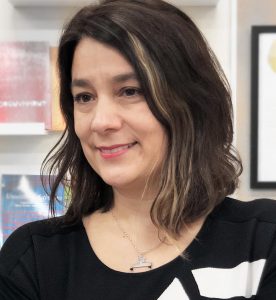
Dr. Gabriela Aceves Sepúlveda (b. Guadalajara, 1973) is a Mexican-Canadian interdisciplinary media artist and cultural historian with a research focus on feminist media art history. She is an Associate Professor in the School of Interactive Arts and Technology at Simon Fraser University where she leads criticalMediaArtsStudio (cMAS). cMAS is an interdisciplinary research-creation studio that produces work that interrogates how old and new technologies have and continue to shape our sense of self through a theoretical lens informed by media and feminist theory.
Gabriela is the author of Women Made Visible: Feminist Art and Media in post-1968 Mexico (University of Nebraska Press, 2019) and winner of the 2020 CALACS Book Prize. She is also the author of several peer-reviewed articles, book chapters, and research-creation projects on feminist media art and archival practices in the Americas. Other research interests include the intersections of sound, race, and gender; the environmental entanglements of digital technologies; the histories and theories of embodiment and performance; the aesthetics of interactive art; and Latin American art and its diasporas.
Her video and sculptural installations that explore the body as a site of cultural, gender and bio-political inscriptions have been exhibited in Canada, Mexico, France, India, Chile and the U.S. She is a member of the art/mamas collective based in Vancouver, BC and has been a board member of various artist-run-centres in Canada including CAFKA in Kitchener-Waterloo, RedHead Gallery in Toronto, and VIVO Media Arts and Access Artist Run-Center in Vancouver. She has served as a jury and reader for ISEA, SIGGRAPH, and CAA and is the Vancouver regional coordinator of TFAP (the Feminist Art Project) at Rutgers University.
Currently, she is working on a book manuscript on the history of electronic and avant-garde music entitled Weaving the Electric Wave: Latin American Women Composers, 1888 -1980; co-editing two volumes, one on the development of immersive technologies in the global south and the second on Latin American Art in Canada.
To learn more about her work visit cMAS website.